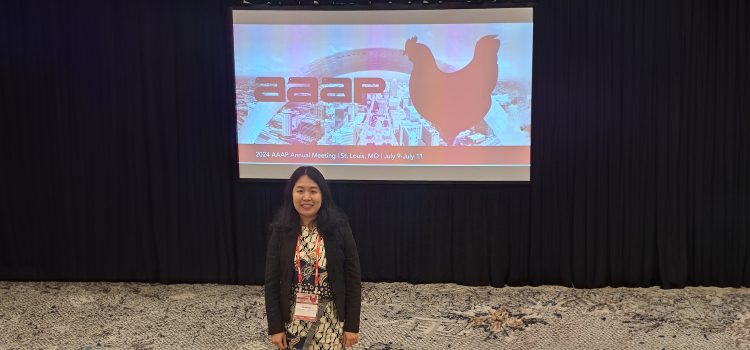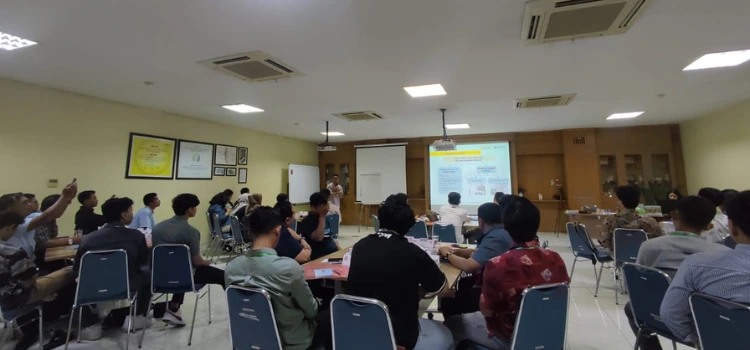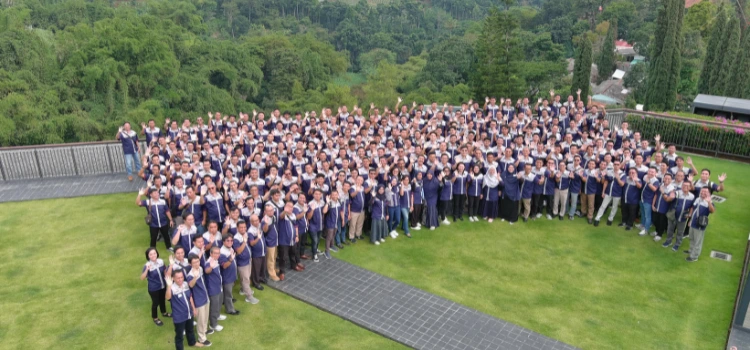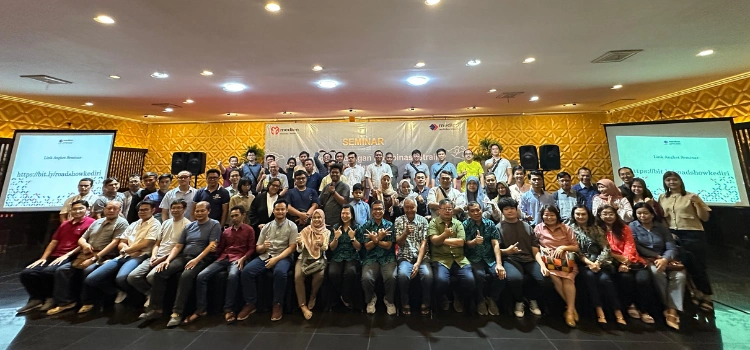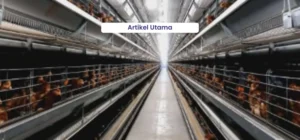Medion is back to participated in an international conference at the 67th Annual Meeting of the American Association of Avian Pathologists (AAAP) with the theme “Maintaining Intestinal Health with Non-Antibiotic Compounds”. Which has been held on on July 9th-11th , 2024 in St. Louis, Missouri, United States. It was attended by more than 700 participants from various universities, research institutions, companies, and governments.
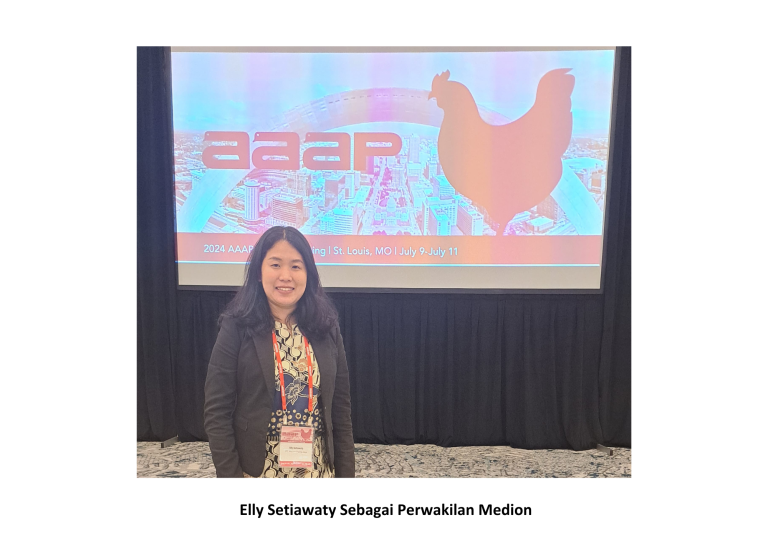
Medion’s representative, Elly Setiawaty had the opportunity to be one of the speakers and present the topic of “Cross-Protection Study of Inactivated H5N1 2.3.2.1c Vaccine against Novel H5N1 2.3.4.4b Virus Circulating in Indonesia”. In addition, she also shared Medion’s experience in developing an AI (Avian Influenza) vaccine which is a solution to the AI H5N1 2.3.4.4b outbreak.
Currently, the HPAI clade 2.3.4.4b virus outbreak has become a global issue. The HPAI virus from the new clade was found in Indonesia at the end of 2022 to 2023. Medion provides a comparative study on the protection of H5N1 vaccines clade 2.3.2.1c and 2.3.4.4b against the challenge of new field isolates from clade 2.3.4.4b. The homologous vaccine from clade 2.3.4.4b showed a higher level of PD50 protection than the heterologous vaccine from clade 2.3.2.1c. The administration of 1 dose of 2.3.2.1c vaccine in SPF (Specific Pathogen Free) chickens provides sub-optimal protection against the challenge of 2.3.4.4b. The vaccine is able to suppress mortality and clinical symptoms, but shows seroconversion.
The HI titer induced by the 2.3.2.1c vaccine at 3 weeks post-vaccination was lower than the 2.3.4.4b vaccine titer (3.8 vs 8.2). The antibodies produced by the 2.3.2.1c vaccine alone are not able to suppress viral shedding. The use of the 2.3.2.1c vaccine at 1 dose may protect against death, but cannot suppress the spread of the 2.3.4.4b virus. The results of the Medion study showed a low level of cross-immunity between H5N1 2.3.2.1c and 2.3.4.4b. It can be used for seroprevalent-based surveillance to indicate the presence of H5N1 2.3.4.4b challenges in chickens vaccinated only with H5N1 2.3.2.1c.
The H5N1 2.3.4.4b case, which is not widely found in Indonesia this year, is the effect of the use of the 2.3.2.1c vaccine which is still able to reduce mortality and clinical symptoms. Therefore, it is important to use homologous vaccines that are able to provide complete protection against clade 2.3.4.4b challenges. As for after the presentation of the material, the session continued with QnA from the audience.
Medion as a poultry vaccine manufacturer in Indonesia continues to be committed to being able to provide benefits to the livestock world and support the progress of animal health in Indonesia and on a global scale. This is in line with Medion’s mission to contribute to all stakeholders.

